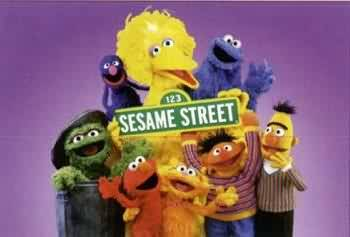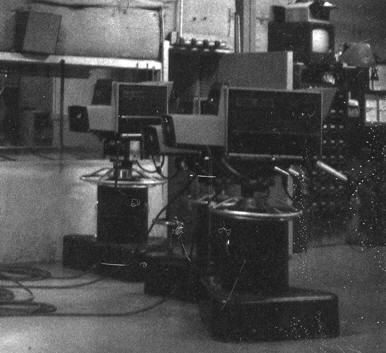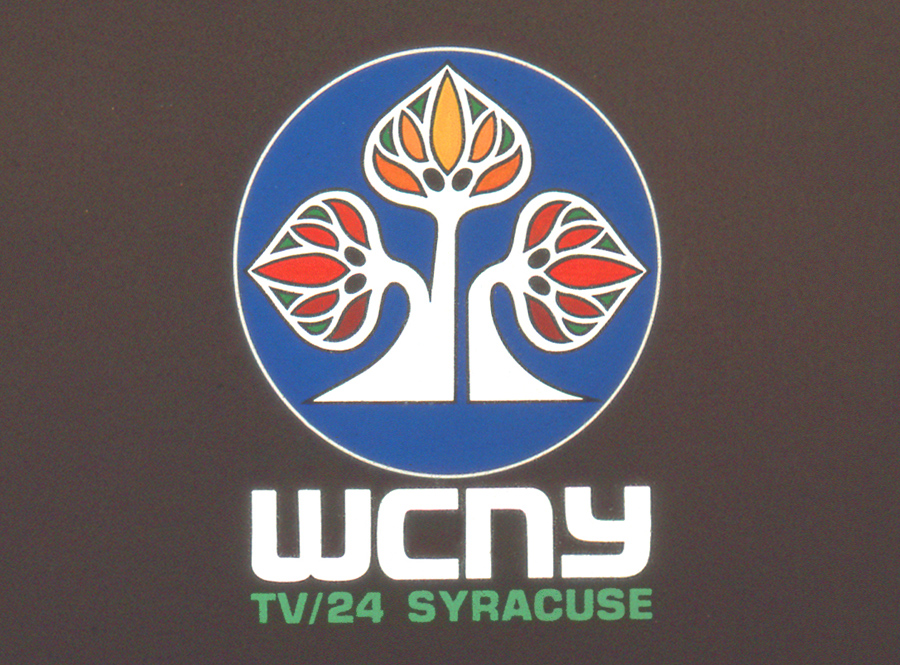
BIG BIRD…BIGGER AUDIENCE

On November 10, 1969, educational television took a tremendous leap with the premier of Sesame Street from N.E.T. and the Children’s Television Workshop. The colorful show geared towards pre-school audiences also caught on big with adults, who loved Jim Henson’s wonderful Muppet characters and the fast-paced animated lessons in math and English. A whole new audience came to Channel 24 and stayed for later series such as Zoom and The Electric Company. It was also the time that N.E.T. was rebranded the Public Broadcasting System (PBS).
But WCNY's local programming was still produced in black-and-white. Although Channel 24 could broadcast color film and videotape and the color feed from PBS they still lacked the equipment for local, live color. The price of color broadcast cameras, about $65,000 each at the time, were budget-busters. Once again, General Electric came through with some hand-me-down equipment.
| “We were gearing up for a 1969 Christmas Tel-Auc
when General Electric sent over some vintage color
cameras from the early 60's,” recalls Mike Clark. “The cameras were old and tired, kind
of like the station’s Ford Falcons. They were almost the size of
refrigerators and, with their pedestals, weighed around 500 pounds.
Our engineer, Chuck Malone, worked on the cameras non-stop for a
week and finally we used them for our first color-cast of the
Tel-Auc. But the cameras were electronically unstable and
difficult to maintain so we were back to black-and-white after the
holiday.” Right - Mike Clark with the G.E.
color camera |
|
 |
Channel 24 finally got local live color in 1971 with the arrival of three brand new General Electric P.E. 400 color cameras. Other technical innovations followed regularly over the next thirty years: stereo, portable cameras and tape decks, digital signal processing, and in 2001, high definition.
Left - The General Electric PE-400, a state-of-the-art color television camera |

Channel 24's classic logo gained rainbow hues for the new color era
BACK TO THE FUTURE
Channel 24’s original Old Liverpool Road facility will be retired in 2011 when the station moves downtown. The new studios will have more floor space and an expanded live audience capability. Engineering will be entirely digital and in high definition. Interactivity with visitors and viewers will be central to the operation.
WCNY will continue through the 21st century with a mandate of quality started more than forty years ago.
- - - - - - - - - - - - - -
Where Are They Now?
Bill Upwood left the station in 1980 to start his own TV production business serving corporate clients in the area. He completed his TV career at the Maxwell School at Syracuse University in 2006. “I came full-spiral, back to ETV," says Upwood, "but after 51 years it was time to fade to black...”
Upwood’s proud of the efforts by employees in WCNY’s early years. “What we did was make the system work and set a standard for quality. We all got along and worked together. It was a good environment, and even with the money problems I think we had the best quality of local production of all the stations. Even now, when I watch a Channel 24 show, it looks much the same as 30 years ago….it’s good quality.”
Ernie Darrh departed Channel 24 in 2007, having seen a generation of technical improvements from black and white to color to high definition.
Mike Clark left WCNY in 1970 to attend college at the University of South Florida. He worked briefly for TelePrompTer Corporation and then spent five years at WTVT, the CBS affiliate in Tampa. After a few years of free lancing in Los Angeles, he joined Columbia Pictures Television (now Sony) and became Executive Director of Videotape Operations, an on-air promotion/production unit for Sony’s syndication Dept. He left in December, 2009, to start his own video venture. “I’m very grateful to WCNY for allowing me to learn the craft of television production,” says Clark. “40 years later, I still have fond memories of the station and my co-workers.” (to visit Mike's historical television site about WTVT, Channel 13, CLICK HERE
Larry Wood has been a producer/director/writer/cameraman/editor with his own production company working out of Las Vegas since 1970. “WCNY was a great ongoing learning experience,” says Wood. “I was always trying to learn new things and because I was the station’s only filmmaker, was involved in many wonderful projects. I was allowed to experiment with different styles and learned how to get a high-production-value-look while shooting with limited budgets. Later, those lessons contributed a great deal to my success as a business owner. In conclusion, I always thought it was funny that the seniority order at the station was Bill UPwood, Larry Wood and Jim UNDERwood.”
Wood has won many awards including four Emmys, nine Tellys and a special Cine Golden Eagle. He was recently inducted into the Nevada Broadcaster’s Hall of Fame.
Russ Tarby worked at WCNY from 1969 through 1998 while pursuing his writing career for Syracuse area publications such as New Times. Russ is as a free-lance editor and now edits JazFax, the monthly publication of the Jazz Appreciation Society of Syracuse. You can also read Russ's articles in the Eagle Newspapers.
Dick Calagiovanni was Channel 24's Production Manager from 1980 until 1998. “Bill Upwood really stimulated the entire production process there," states Calagionvanni. "He was just terrific. When Bill left to start his own production business, I was really proud but in awe of replacing him as production manager.” Dick left the station in 1998 to pursue full time a masters degree in Telecommunication at Syracuse University. He has worked for the past few years as a Sales Engineer for various telecommunication carriers. For the past 18 years, Dick's been an adjunct at The Newhouse School and The School of Information Studies at Syracuse University. He still dabbles in television production.
Steve Meltzer served as Art Director for Channel 24 until 2007.
Ron Friedman owns Synergetic Productions in Syracuse.www.synergeticproductions.com
Special Thanks to: Bill Upwood and Steve Meltzer for their assistance with photo research and Russ Tarby for editorial assistance.